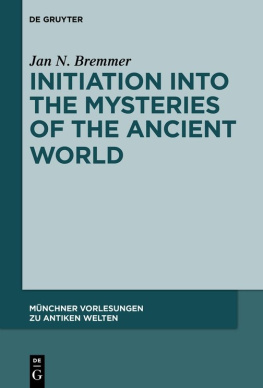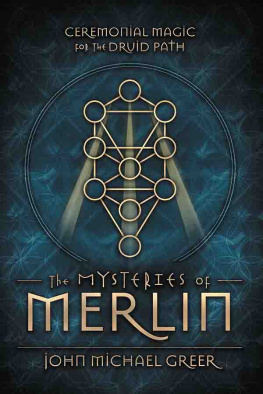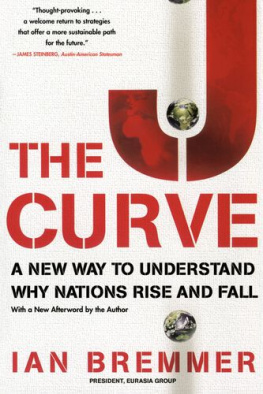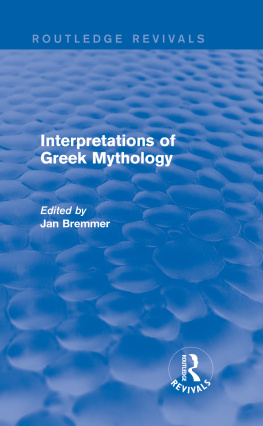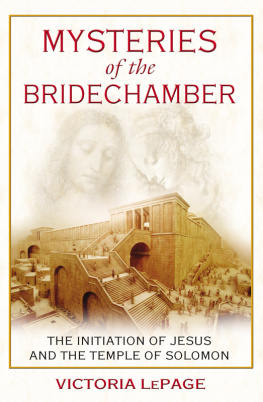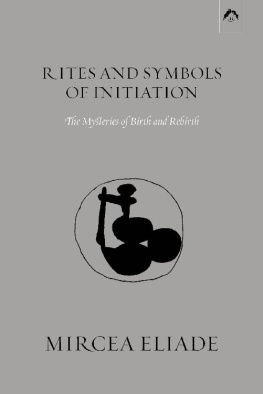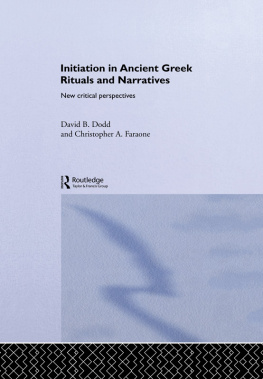Jan N. Bremmer - Initiation into the Mysteries of the Ancient World
Here you can read online Jan N. Bremmer - Initiation into the Mysteries of the Ancient World full text of the book (entire story) in english for free. Download pdf and epub, get meaning, cover and reviews about this ebook. year: 2014, publisher: De Gruyter, genre: Romance novel. Description of the work, (preface) as well as reviews are available. Best literature library LitArk.com created for fans of good reading and offers a wide selection of genres:
Romance novel
Science fiction
Adventure
Detective
Science
History
Home and family
Prose
Art
Politics
Computer
Non-fiction
Religion
Business
Children
Humor
Choose a favorite category and find really read worthwhile books. Enjoy immersion in the world of imagination, feel the emotions of the characters or learn something new for yourself, make an fascinating discovery.
- Book:Initiation into the Mysteries of the Ancient World
- Author:
- Publisher:De Gruyter
- Genre:
- Year:2014
- Rating:3 / 5
- Favourites:Add to favourites
- Your mark:
- 60
- 1
- 2
- 3
- 4
- 5
Initiation into the Mysteries of the Ancient World: summary, description and annotation
We offer to read an annotation, description, summary or preface (depends on what the author of the book "Initiation into the Mysteries of the Ancient World" wrote himself). If you haven't found the necessary information about the book — write in the comments, we will try to find it.
Initiation into the Mysteries of the Ancient World — read online for free the complete book (whole text) full work
Below is the text of the book, divided by pages. System saving the place of the last page read, allows you to conveniently read the book "Initiation into the Mysteries of the Ancient World" online for free, without having to search again every time where you left off. Put a bookmark, and you can go to the page where you finished reading at any time.
Font size:
Interval:
Bookmark:
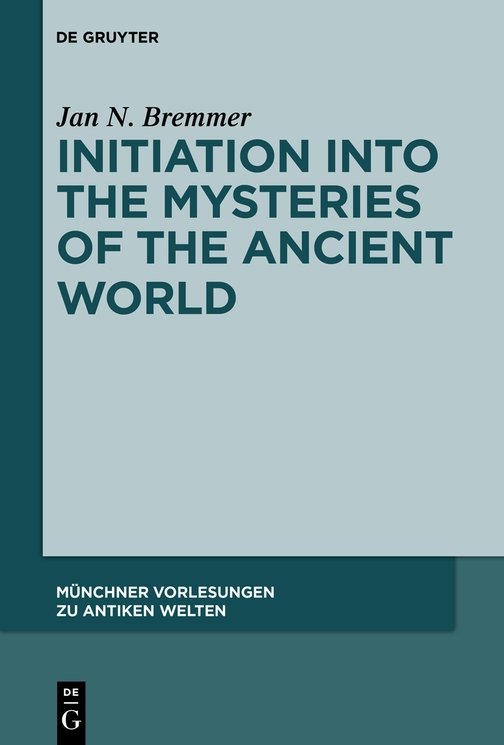
The basis of this book are the four public lectures I had the honour to give as the inaugural Gastprofessor fr Kulturgeschichte des Altertums at the Mnchner Zentrum fr Antike Welten, Ludwig-Maximilians-Universitt, Munich, in the academic year 20112012. They appear here as Chapters I, III, V and VI: I have retained their oral character but have added notes. I cannot say enough how much my wife Christine and I enjoyed Munich in general and the LMU in particular, a really great university. I am particularly grateful to Klaus Vollmer and Martin Hose who did so much to bring us to Munich; Martin also introduced me to the past and present world of German Classics and academia, always being able to come up with interesting anecdotes and shrewd insights. From the immediate colleagues I would also like to mention Susanne Goedde, Stefan Ritter, Rolf Schneider and Walther Sallaberger as well as Peter Marinko-vic and Klaus Baltzer, who equally did so much to make me feel at home. From the graduates, Martin Schrage, Verena Schulz and Isabella Wiegand in particular enriched our social life, as did our old friends Hans and Geertje Teitler-Morsink and our newly made friend Siegfried Friedenberger and others from Nihao; on a more practical level, I was greatly helped by my student assistants Johannes Isepy and Henry Gordon. Most of all, though, I would like to thank my secretary Sandra Zerbin who made my life in the university so pleasant with unfailing good humour and discreet efficiency: I still miss our coffee breaks, Sandra.
I continued to work on my lectures as a Visiting Research Scholar at the Institute for the Study of the Ancient World in New York during the academic year 20122013. Here I also wrote two new chapters (Chapters II and IV) in order to present a more rounded picture of the ancient Mysteries. I am most grateful to the director Roger Bagnall for the chance to spend a year in this inspiring environment, where I profited from stimulating seminars by Luigi dAlfonso, Rod Campbell and, especially, Robert Hoyland as well as from many pleasant conversations with Li Zhang.
The book was completed in Erfurt, where I am a Fellow at the Max-Weber-Kolleg fr kultur- und sozialwissenschaftliche Studien of the Universitt Erfurt in 20132014. I am most grateful to Jrg Rpke and Martin Mulsow for their invitation to this intellectually invigorating environment. There are few better places in Europe to study ancient and modern religion, and I have greatly profited from the methodological discussions of its seminars as well as from the weekly Kolloquium of Veit Rosenberger and Katharina Waldner.
I would also like to thank Brill (Leiden), the Franz Steiner Verlag (Stuttgart) and Vinciane Pirenne-Delforge of the journal Kernos for their permission to reprint the articles mentioned below. For this book I have corrected, standardised, updated, and, as far as possible, reduced overlaps in these chapters.
While working on this book I have incurred a number of debts, which I have mentioned at the end of each chapter. Naturally, I have also learned many things about the Mysteries from my colleagues and friends, in particular Christoph Auffarth, Walter Burkert, Ken Dowden, Richard Gordon, Fritz Graf, Albert Henrichs, Robert Parker and the late Christiane Sourvinou-Inwood. Bob Fowler kindly read the whole of my manuscript and saved me from a number of mistakes and obscurities, Mirjam Engert Kotwick generously helped to read the proofs, and Orla Mulholland skilfully corrected the English of my main manuscript. Last but not least, my wife Christine accompanied me on my journeys to Munich, New York and Erfurt, and happily endured the spell of the ancient Mysteries. I am grateful to them all.
| Chapter I | Initiation into the Eleusinian Mysteries: A Thin Description, in C.H. Bull et al. (eds), Mystery and Secrecy in the Nag Hammadi Collection and Other Ancient Literature: Ideas and Practices. Festschrift for Einar Thomassen (Leiden: Brill, 2011) 375397 |
| Appendix 1 | Demeter in Megara, in A. Mastrocinque and C.G. Scibona (eds), Demeter, Isis, Vesta, and Cybele. Studies in Greek and Roman Religion in Honour of Giulia Sfameni Gasparro (Stuttgart: Steiner, 2012) 2336 |
| Appendix 2 | The Golden Bough: Orphic, Eleusinian and Hellenistic-Jewish Sources of Virgils Underworld in Aeneid VI, Kernos 22(2009) 183208 |
For Giulia Sfameni Gasparro
Our material has hardly increased since, but the flourishing of the study of Greek religion in recent decades does enable us to look at the existing evidence with new eyes, and this may perhaps lead to some new insights. As always, the proof of the pudding will be in the eating.
At one time Demeter was the most important divinity of Megara. This is clear from the fact that Demeter was closely connected with the foundation of Megara. Pausanias, our most informative source of Megarian religious and mythological traditions, relates: they say that the city received its present name in the time of Car, the son of Phoroneus, who was the king in this land. It was then, for the first time, that the people erected sanctuaries for Demeter, then that the mortals called them Megara. This is what the Megarians say about themselves (1.39.5). The notice is interesting for more than one reason.
First, Pausanias himself had been to Megara several times and was evidently interested in the city. He even mentions our guide (exegts) to local matters (1.41.2). Second, it is striking that Megara does not seem to have had a proper first king of its own stock. Phoroneus was always closely associated with Argos, where he was the first king, if not first human, and recently an epigram mentioning his grave, which Pausanias (2.20.3) could still see, has emerged during local construction work.
As frequently in Greek mythology, for example, serpentine
Hanell argues that we should not combine the figures of Demeter and Car, as the latter is only a Schattengestalt. and Strabo (14.1.3) reports a special connection of the royal family of Ephesus with Demeter: the Thebans told Pausanias (9.16.5) that the temple of Demeter Thesmophoros once had been the house of Kadmos, and in Boeotia we find the epithets Achaia and Amphiktionis of Demeter. There is, then, no reason to reject the combination of Car and Demeter as at least testifying to an old connection of Demeter with political power.
Somewhat later in his description Pausanias returns to Car and he adds: After the sanctuary of Zeus we ascend the acropolis, which to the present day is still called Caria, after Car, the son of Phoroneus Here, too, is what is called the hall (megaron) of Demeter: they said it was made by King Car (1.40.6, tr. Frazer). and the notice may well be one more testimony to the fame of Demeter and Persephones Eleusinian sanctuary.
Franois Chamoux opts for a different etymology in his Bud commentary and connects the name of Megara with the verb As the latter is rather more detailed, we will present its version:
The Thesmophoria was performed according to the more mythical account because, when Kore was carried off by Plouton while picking flowers, one Eubouleus, a swineherd, was pasturing pigs on that spot, and they were swallowed up in the pit of Kore. So in honour of Eubouleus the piglets are thrown into the pits of Demeter and Kore. The rotten remains of the items thrown into the chambers (megara) are brought up by women called bailers who have kept themselves pure for three days: they go down into the secret places (adyta) and bring up the remains and put them on the altars. They think that anyone who takes some of this and mixes it in when sowing will have good crops. And they say that there are also snakes underground in the pits, which eat most of what is thrown in. And so they make noises when the women bail out and when they deposit those figures again, to make the snakes which they regard as guardians of the secret places withdraw. The same rites are also called
Font size:
Interval:
Bookmark:
Similar books «Initiation into the Mysteries of the Ancient World»
Look at similar books to Initiation into the Mysteries of the Ancient World. We have selected literature similar in name and meaning in the hope of providing readers with more options to find new, interesting, not yet read works.
Discussion, reviews of the book Initiation into the Mysteries of the Ancient World and just readers' own opinions. Leave your comments, write what you think about the work, its meaning or the main characters. Specify what exactly you liked and what you didn't like, and why you think so.

